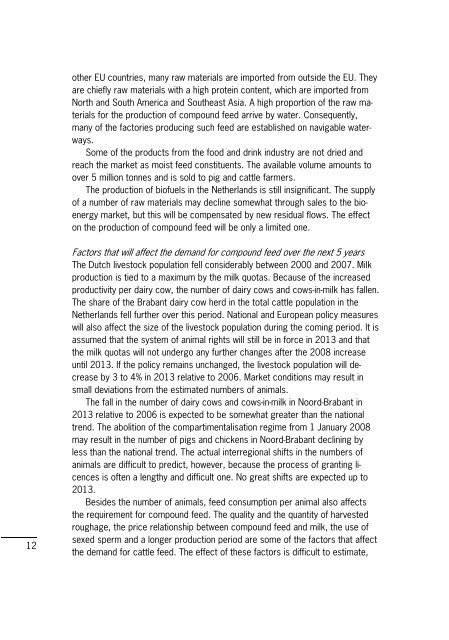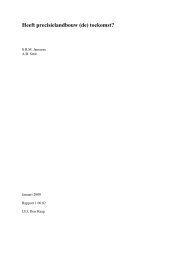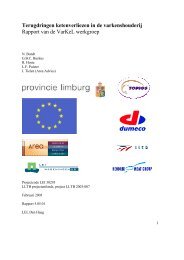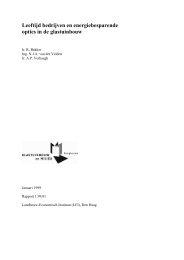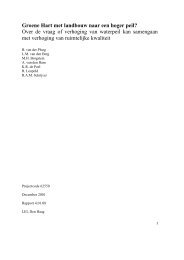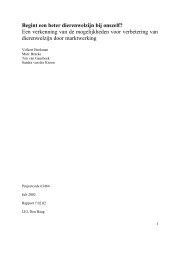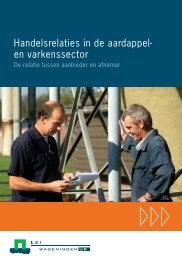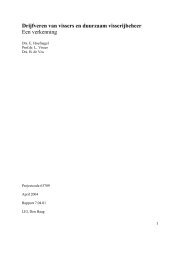2008-062 Mengvoederproductie Brabant SANDY - LEI
2008-062 Mengvoederproductie Brabant SANDY - LEI
2008-062 Mengvoederproductie Brabant SANDY - LEI
Create successful ePaper yourself
Turn your PDF publications into a flip-book with our unique Google optimized e-Paper software.
12<br />
other EU countries, many raw materials are imported from outside the EU. They<br />
are chiefly raw materials with a high protein content, which are imported from<br />
North and South America and Southeast Asia. A high proportion of the raw ma<br />
terials for the production of compound feed arrive by water. Consequently,<br />
many of the factories producing such feed are established on navigable water<br />
ways.<br />
Some of the products from the food and drink industry are not dried and<br />
reach the market as moist feed constituents. The available volume amounts to<br />
over 5 million tonnes and is sold to pig and cattle farmers.<br />
The production of biofuels in the Netherlands is still insignificant. The supply<br />
of a number of raw materials may decline somewhat through sales to the bio<br />
energy market, but this will be compensated by new residual flows. The effect<br />
on the production of compound feed will be only a limited one.<br />
Factors that will affect the demand for compound feed over the next 5 years<br />
The Dutch livestock population fell considerably between 2000 and 2007. Milk<br />
production is tied to a maximum by the milk quotas. Because of the increased<br />
productivity per dairy cow, the number of dairy cows and cowsinmilk has fallen.<br />
The share of the <strong>Brabant</strong> dairy cow herd in the total cattle population in the<br />
Netherlands fell further over this period. National and European policy measures<br />
will also affect the size of the livestock population during the coming period. It is<br />
assumed that the system of animal rights will still be in force in 2013 and that<br />
the milk quotas will not undergo any further changes after the <strong>2008</strong> increase<br />
until 2013. If the policy remains unchanged, the livestock population will de<br />
crease by 3 to 4% in 2013 relative to 2006. Market conditions may result in<br />
small deviations from the estimated numbers of animals.<br />
The fall in the number of dairy cows and cowsinmilk in Noord<strong>Brabant</strong> in<br />
2013 relative to 2006 is expected to be somewhat greater than the national<br />
trend. The abolition of the compartimentalisation regime from 1 January <strong>2008</strong><br />
may result in the number of pigs and chickens in Noord<strong>Brabant</strong> declining by<br />
less than the national trend. The actual interregional shifts in the numbers of<br />
animals are difficult to predict, however, because the process of granting li<br />
cences is often a lengthy and difficult one. No great shifts are expected up to<br />
2013.<br />
Besides the number of animals, feed consumption per animal also affects<br />
the requirement for compound feed. The quality and the quantity of harvested<br />
roughage, the price relationship between compound feed and milk, the use of<br />
sexed sperm and a longer production period are some of the factors that affect<br />
the demand for cattle feed. The effect of these factors is difficult to estimate,


